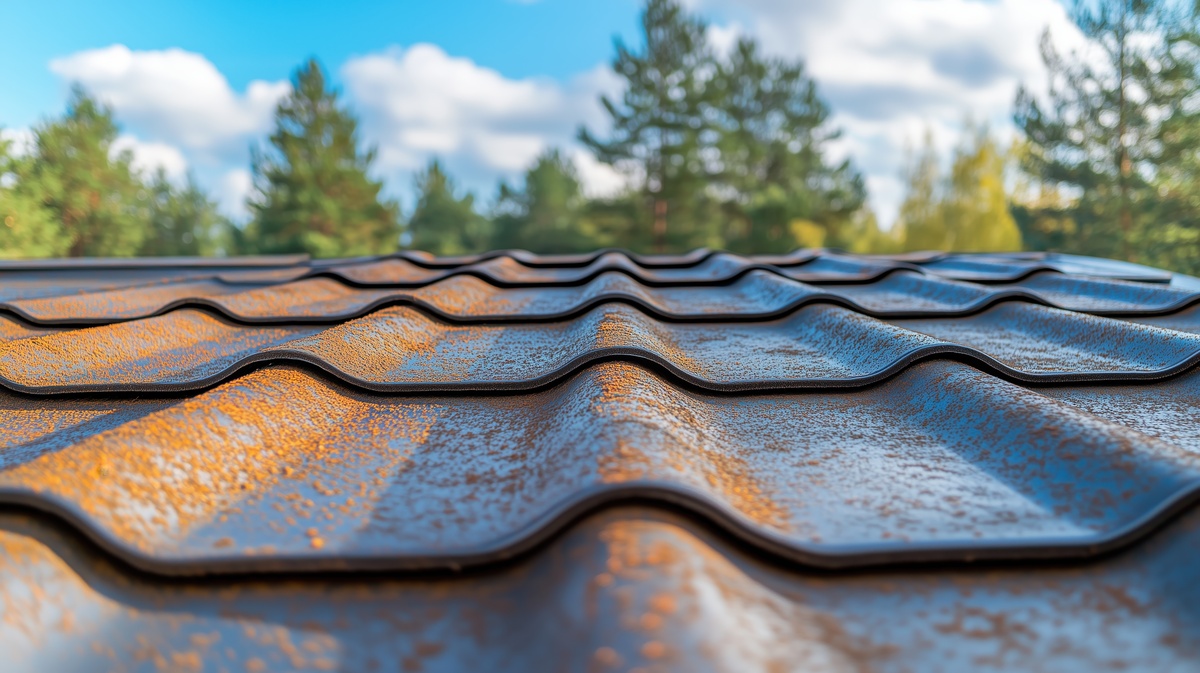How to Avoid Rust on a Metal Roof

Rust is one of the most common and costly problems for metal roof owners. Whether you’re a homeowner protecting a long-term investment or a contractor delivering a professional-grade installation, understanding rust prevention is key to maximizing roof life.
Below, we’ll cover environmental considerations, application techniques, troubleshooting strategies, and professional best practices to help you prevent corrosion and keep your metal roof performing for decades.
Why Climate and Environment Matter in Rust Prevention
Not all roofs face the same rust risks. Climate conditions, geographic location, and environmental factors directly impact corrosion rates:
- Coastal Regions – Salt in the air accelerates oxidation. In these areas, use high-zinc-content panels and marine-grade coatings for maximum protection.
- High-Humidity Zones – Persistent moisture increases the likelihood of rust, especially in shaded areas. Elastomeric coatings or galvanized panels offer excellent defense.
- Acid Rain Areas – Pollutants in rainwater can strip protective finishes; zinc-rich primers and frequent inspections are critical.
- Extreme Weather Regions – More frequent hail, heavy snow, or high winds can damage protective layers, allowing rust to form faster. Choose impact-resistant panels and reapply coatings promptly after weather events.
- Hot/Dry Climates – UV exposure can break down coatings over time. Select UV-stable paint systems and elastomeric coatings designed for high solar loads.
Step-by-Step Surface Preparation and Application Techniques
Regardless of which rust prevention method you choose, proper preparation is non-negotiable.
Surface Preparation
- Inspect – Identify any existing rust spots, loose fasteners, or damaged panels.
- Clean – Use a soft-bristle brush or power washer (low-pressure setting) to remove dirt, debris, and loose rust. For stubborn oxidation, use a wire brush or grinder with a rust-removal wheel.
- Rinse – Thoroughly rinse the roof to remove cleaning agents.
- Dry – Allow the surface to dry completely before applying any coating or paint.
Rust Prevention Methods
Paint the Roof
- Primer – Apply a zinc-rich primer (at least 80% zinc) for superior corrosion resistance.
- Application Tools – Use an airless sprayer for large surfaces or a high-quality brush/roller for smaller areas.
- Technique – Apply primer in thin, even coats, allowing full cure time before topcoating.
- Maintenance – Repaint every 3–5 years, depending on environmental exposure.
Use High-Quality Metal Panels
- Choose panels with a high zinc content or an aluminum-zinc alloy coating (Galvalume).
- Verify the source and quality; low-cost imports may have inadequate protective layers.
- Opt for panels with factory-applied finishes tested for salt spray and UV resistance.
For a broader look at how metal roofing compares to other options in terms of durability, maintenance, and cost over time, see our guide: Comparing Metal Roofing with Different Roofing Materials.
Apply Elastomeric Coatings
- Provides a flexible, waterproof barrier that expands and contracts with the roof.
- Apply in multiple thin layers with a sprayer or roller.
- Available in reflective colors to improve energy efficiency.
- Especially effective in high-humidity, coastal, and freeze-thaw climates.
Use Galvanized Roofing
- Hot-dip galvanizing applies a thick zinc coating for long-lasting protection.
- Ideal for new installations in high-corrosion areas.
- Zinc layer shields the metal from rain, snow, and UV damage.
Troubleshooting and Remediation Strategies
Minor Rust Spots
- Repair – Clean thoroughly, sand down to bare metal, apply rust converter, then prime and coat.
- Cost-effective Tip – Spot-treat rather than replacing panels if rust hasn’t penetrated deeply.
Advanced Rust
- If rust has caused pitting or structural compromise, panel replacement is the safest option.
- Avoid covering severe rust with coatings; trapped corrosion will continue to spread.
Contractor Tips and Professional Best Practices
- Estimate Coverage Accurately – Calculate coating or paint requirements based on roof size, slope, and product spread rate.
- Store Materials Properly – Keep primers, paints, and coatings in a cool, dry place to prevent spoilage.
- Seasonal Application – Apply coatings in moderate weather; extreme heat or cold can affect adhesion and cure time.
- Consistency Across Projects – Use the same application technique and equipment for uniform results.
- Inspection Schedule – Recommend annual roof inspections for clients, with more frequent checks in high-risk climates.
The Bottom Line
Preventing rust on a metal roof is a combination of using the right materials, preparing surfaces properly, and adapting to environmental conditions. With the right approach and consistent maintenance, you can extend roof life by decades, reduce costly repairs, and maintain curb appeal.
Whether you’re working on a residential property in a humid coastal town or a commercial facility in a freeze-thaw climate, AMSI Supply offers high-quality panels, coatings, and installation tools to help you deliver lasting results. Contact us today to get expert guidance and the materials you need.